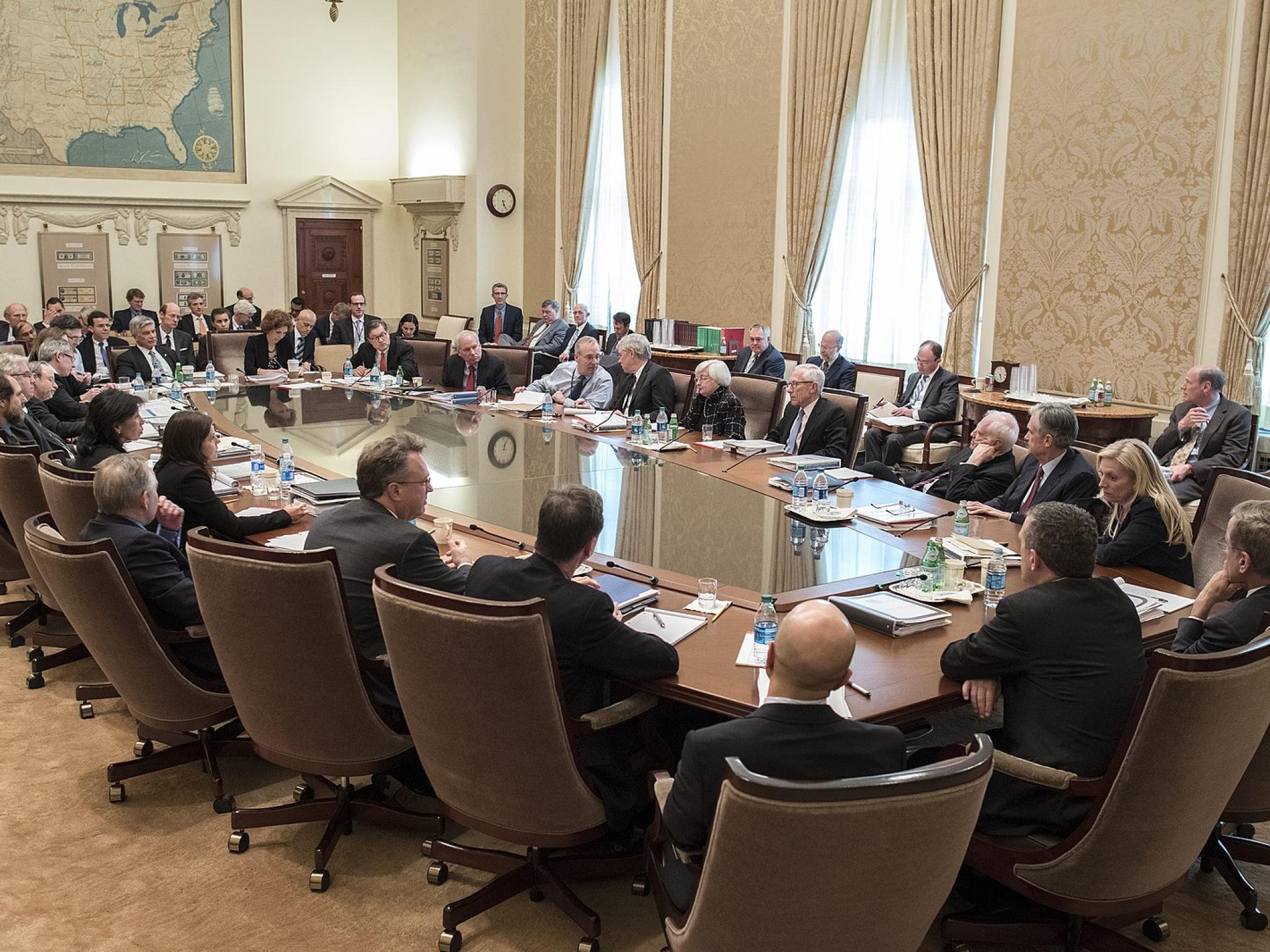
The Federal Open Market Committee, or FOMC, is the Fed's chief body for monetary policy. Its voting membership combines the seven members of the Board of Governors, the president of the Federal Reserve Bank of New York and four other Reserve Bank presidents who serve one-year terms on a rotating basis with the other Reserve Bank presidents.
The FOMC typically meets eight times a year in Washington, D.C., or by teleconference as necessary. Inside of the meetings, the FOMC works with the Federal Reserve Board of Governors to control the four tools of monetary policy: the reserve requirement, open market operations, the discount rate and interest on excess reserves.
The FOMC sets a target range for the fed funds rate at its meetings, while the board sets the discount rate and reserve requirement. As an arm of the Federal Reserve system, its goal is to promote maximum employment, stable prices, and moderate interest rates over time.
The committee adjusts interest rates by setting a target for the fed funds rate. This is the rate that banks charge each other for overnight loans known as fed funds. Banks use the fed funds loans to make sure they have enough to meet the Fed's reserve requirement. Banks must keep this reserve each night at their local Federal Reserve bank or in cash in their vaults.
How does this affect an investor? The FOMC affects investors through control of the fed funds rate. Banks use this rate to guide all other interest rates. As a result, the fed funds rate controls the availability of money to invest in houses, businesses and ultimately in salaries and investment returns. This directly affects the value of an investor's retirement portfolio, the cost of their next mortgage, the selling price of their home and the potential for their next raise.
A 2016 meeting of the FOMC. Photo courtesy of the Federal Reserve.







